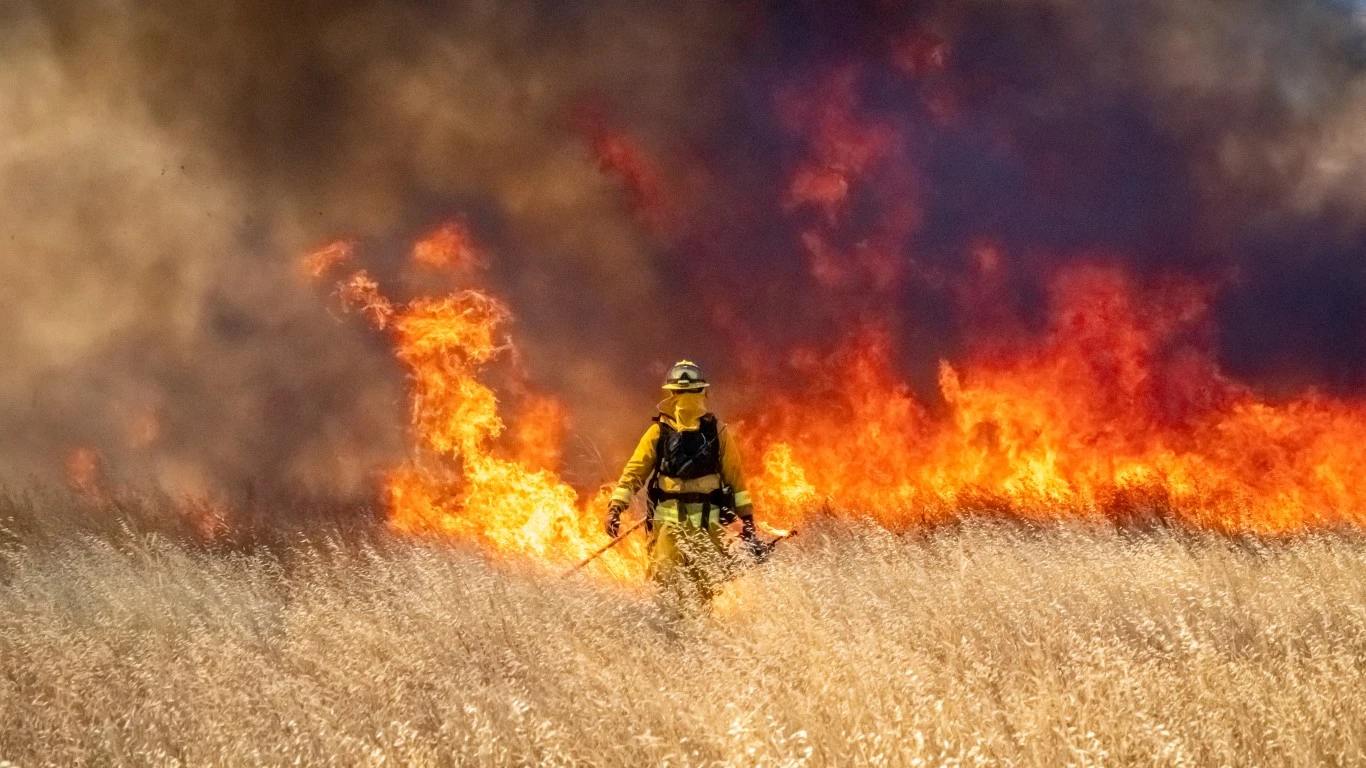
The National Interagency Fire Center reported that as of Sept. 21, 51,606 fires have burned 6,815,741 acres in the United States, above the 10-year average. Wildfires have become a cause of concern, particularly in the West, as climate change wreaks havoc on the environment.
To determine the states where wildfires caused the most damage, 24/7 Wall St. aggregated wildfire data from the most recent 10 years, 2012 to 2021, as compiled by the National Interagency Fire Center. States are ranked in order of total acreage burned by wildfires — forest fires that are not legal, controlled burns — over that period. Data on the percentage of acres burned by wildfires caused by humans or lightning also came from the NIFC. Data on total forest land came from the USDA’s 2020 Forest Inventory and Analysis, Fiscal Year 2020 Business Report, and reflects the most recent available state survey data.
It should come as little surprise that Western states are experiencing the worst impacts of wildfires. On Sept. 23, the NIFC reported that of the current 96 active fires, 40 are in Idaho, 27 in Montana, and 16 in Washington. Fires in Oregon, California, Oklahoma, and Wyoming consist of the rest. All these states are among the top 10 states on the list, where the most acres burned in the past 10 years, except for Wyoming, which ranks 14th. (These are the places most likely to have wildfires.)
In nine states, all in the West, lightning was responsible for more than 50% of the acres burned from 2012 to 2021. In Alaska, which has 15% of the total U.S. forest land, fires ignited by lighting were responsible for more than 96% of the acres burned. Humans are still the main culprits behind forest fires. In 20 states, they are the only cause of wildfires and of acres burned as a result.
Wildfires started by people typically occur where humans live, and these can be suppressed quickly. Lightning-caused fires, on the other hand, can strike remote wilderness areas and spread fast before firefighters can respond. Western states are among the geographically largest and least populated.
Climate change plays a role in this because these areas of the West have experienced extended periods of drought, making wildfires more dangerous than blazes ignited 10 years ago. (Also see, states with the deadliest fires.)
Lightning frequency also may be affected by climate change. David Romps, who studied atmospheric dynamics at the University of California, Berkeley, published a study in 2014 that used atmospheric factors to forecast changes in lightning frequency. The findings indicate lighting rates will rise 12% for every degree Celsius (about 2 degrees Fahrenheit) increase in global temperatures.
Click here to see how much of every state has burned in wildfires.





